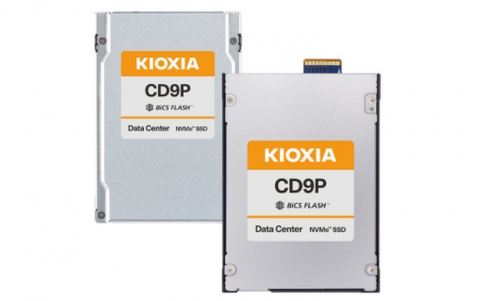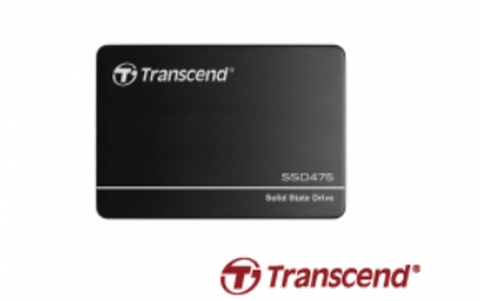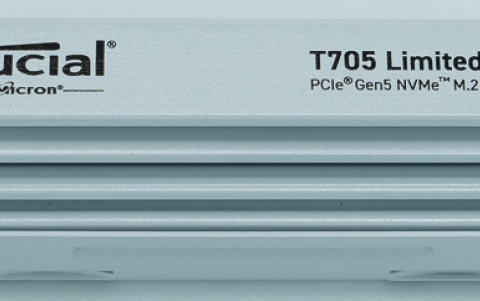
Samsung Unveils Dual T-DMB Mobile Phone at IFA
In hall 20 at the IFA trade show, Samsung's SGH-P900D dual-band handset shows that the DMB standard still offers considerable upside potential
The demonstration on show in Berlin adds RTL, SuperRTL, n-tv and the popular "Welt der Wunder" (RTL II) program to the four existing channels (ZDF, N-24, MTV and the ProSieben comedy entertainment channel) not to mention 14 radio channels (eleven band III and three L-band channels) plus two visual radio offering for the Berlin-Brandenburg region.
This is efinitely good news for mobile TV users. Up to now, the Digital Multimedia Broadcasting (DMB) standard was restricted to just four TV channels in Germany . Soon, however, avid viewers could in theory be spoiled for choice with as many as 20 different channels.
At the forthcoming trade show, Samsung will present the SGH-P900D dual-band mobile as the first handset in the new dual-band generation. Up to now, eight radio programs are broadcast over what is known as the "L-band". Within the same wave band, Mobiles Fernsehen Deutschland (MFD) uses four TV channels and also broadcasts a "visual radio" program under the BigFM2see label. Visual radio is a format whose sound elements are enhanced by pictures broadcast every two seconds. At IFA in Berlin , T-Systems has now reserved another block of the L-band and is thus adding four extra TV channels (in particular RTL in the context of this demonstration) to the four channels already on offer.
The L-band itself is then complemented by a further wave band (band III) that currently gives mobile phone users access to the eleven existing radio programs, but could theoretically support up to four more TV channels.
Nor can the possibility of further TV channels be precluded.
"Theoretically, as many as 20 TV channels would be conceivable provided that all wave bands are allocated and the TV channels are assigned accordingly," explains Helmut Egenbauer, spokesman for the Media&Broadcast management team at T-Systems. "As with digital radio, it is also conceivable that reception of public TV broadcasts too could be freely available. Our aim is to enable end customers soon to benefit from this wide choice of programs over the DMB standard. What we are demonstrating at IFA, however, is that this is already possible today."
Right now, the DMB standard allows mobile TV customers to receive four channels in six German cities ( Berlin , Cologne , Munich , Stuttgart , Frankfurt and Nuremberg ). The plan is to make this service available in six more German cities and conurbations ( Hamburg , Saarbrόcken, Dortmund , Kaiserslautern , Leipzig and Hanover ) in the near future. The Samsung SGH-P900 a landscape format design complete with stereo speakers, a digital sound amplifier, a dynamic 150 MB memory, external MicroSD memory expansion slots, a TV output and multimedia features such as a two-megapixel camera, an MP3 player and Bluetooth technology is being marketed in conjunction with TV content offerings from debitel.
Visitors can attend a Samsung live demonstration in hall 20 at the IFA 2006 in Berlin . The T-Systems live demonstration will take place in hall 6.2/101.
This is efinitely good news for mobile TV users. Up to now, the Digital Multimedia Broadcasting (DMB) standard was restricted to just four TV channels in Germany . Soon, however, avid viewers could in theory be spoiled for choice with as many as 20 different channels.
At the forthcoming trade show, Samsung will present the SGH-P900D dual-band mobile as the first handset in the new dual-band generation. Up to now, eight radio programs are broadcast over what is known as the "L-band". Within the same wave band, Mobiles Fernsehen Deutschland (MFD) uses four TV channels and also broadcasts a "visual radio" program under the BigFM2see label. Visual radio is a format whose sound elements are enhanced by pictures broadcast every two seconds. At IFA in Berlin , T-Systems has now reserved another block of the L-band and is thus adding four extra TV channels (in particular RTL in the context of this demonstration) to the four channels already on offer.
The L-band itself is then complemented by a further wave band (band III) that currently gives mobile phone users access to the eleven existing radio programs, but could theoretically support up to four more TV channels.
Nor can the possibility of further TV channels be precluded.
"Theoretically, as many as 20 TV channels would be conceivable provided that all wave bands are allocated and the TV channels are assigned accordingly," explains Helmut Egenbauer, spokesman for the Media&Broadcast management team at T-Systems. "As with digital radio, it is also conceivable that reception of public TV broadcasts too could be freely available. Our aim is to enable end customers soon to benefit from this wide choice of programs over the DMB standard. What we are demonstrating at IFA, however, is that this is already possible today."
Right now, the DMB standard allows mobile TV customers to receive four channels in six German cities ( Berlin , Cologne , Munich , Stuttgart , Frankfurt and Nuremberg ). The plan is to make this service available in six more German cities and conurbations ( Hamburg , Saarbrόcken, Dortmund , Kaiserslautern , Leipzig and Hanover ) in the near future. The Samsung SGH-P900 a landscape format design complete with stereo speakers, a digital sound amplifier, a dynamic 150 MB memory, external MicroSD memory expansion slots, a TV output and multimedia features such as a two-megapixel camera, an MP3 player and Bluetooth technology is being marketed in conjunction with TV content offerings from debitel.
Visitors can attend a Samsung live demonstration in hall 20 at the IFA 2006 in Berlin . The T-Systems live demonstration will take place in hall 6.2/101.





















